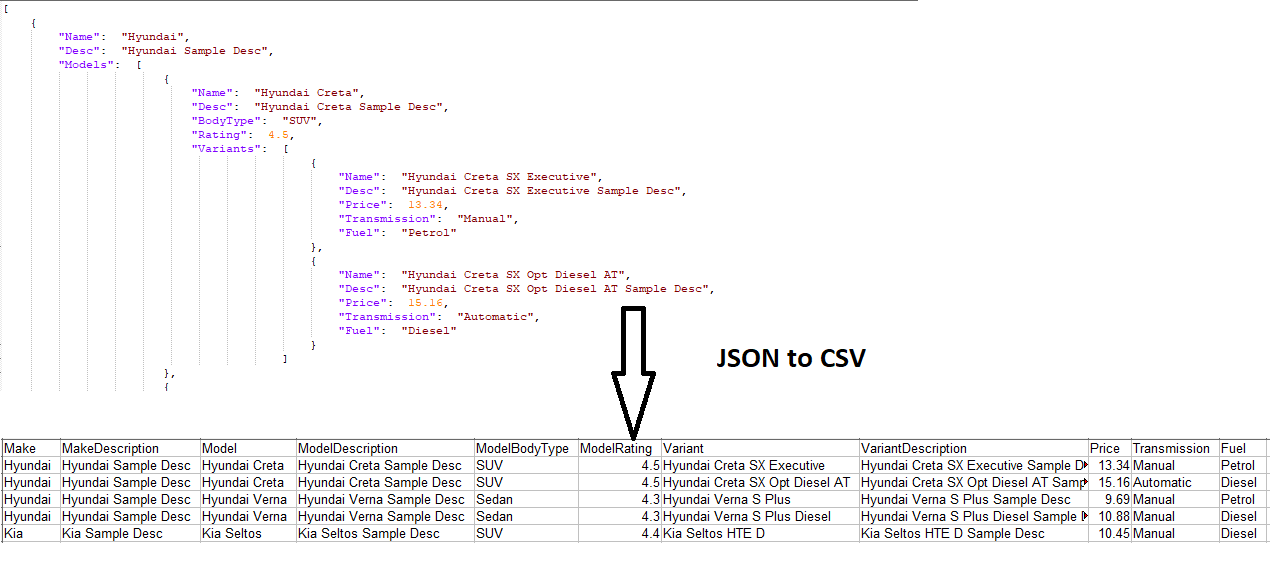
console.log('buff is typeof: ', typeof buff) Ĭonsole.log(`An error has occurred: $`) Ĭonst folderName = uuidv1() // Create a unique string based on system timestampįs. Write function to fetch CSV writeFileSyncĬonsole.log('Downloading CSV file at: ', url) Approach: Follow the steps below to achieve the solution: Read the csv file using default fs npm package. Could someone give me a quick pointer? const https = require('https') All the rows of the CSV will be converted to JSON objects which will be added to the resultant array which will then be converted to JSON and a corresponding JSON output file will be generated. Csvtojson npm.io csv-file-to-json, data-to-json npm.io Csvtojson Packages csv-file-to-json Converts a csv file to a json.

What I’m scratching my head at, is understanding where the appropriate place in the code is to position the JSON conversion, and then how to integrate that into what already exists. JSON file extension, though at this point it’s actually still in a CSV format. The code below works perfectly well in importing the CSV and saving it out into a file with a. I have the naming of the fields static here, but you could use code to set the headers dynamically: for(var j=0 j csvtojson is a library that is modular and. To install json-2-csv, use the following command: npm install json-2-csv 5. Its ability to handle nesting is fairly extensive and function. Excel will remove the seperators like, and others and will insert newlines etc. json-2-csv also supports sub-documents, custom ordering of columns, and the ability to re-generate JSON documents that were used to generate the CSV. This way you can use a CSV that is copied into Excel. I have a similar answer like but my code can be used in conjunction with Excel directly (copy and paste from Excel into a textarea). I think, I have a better solution, this also have one issue i.e.




 0 kommentar(er)
0 kommentar(er)
